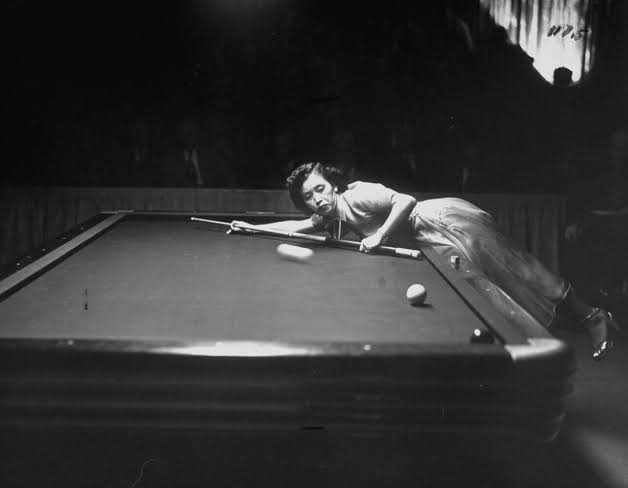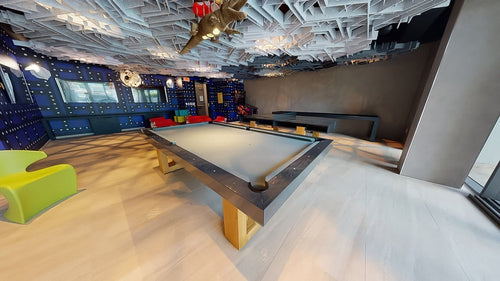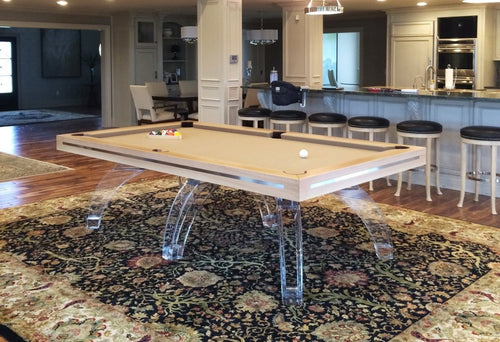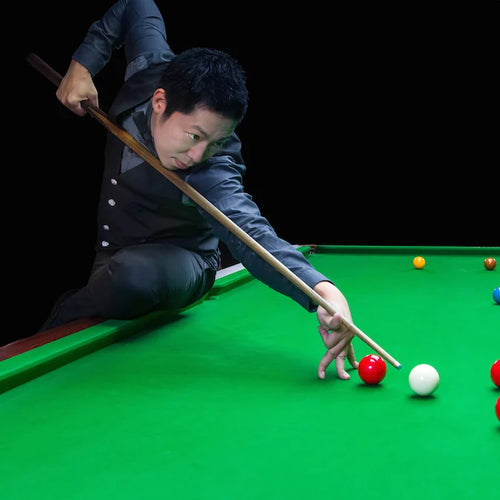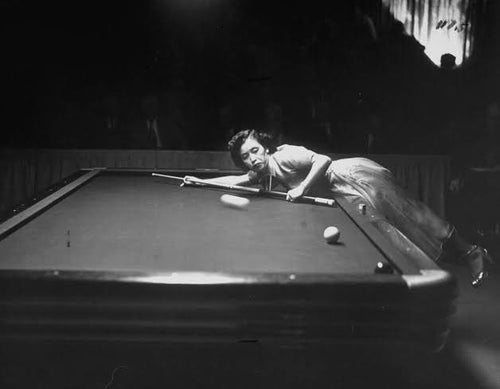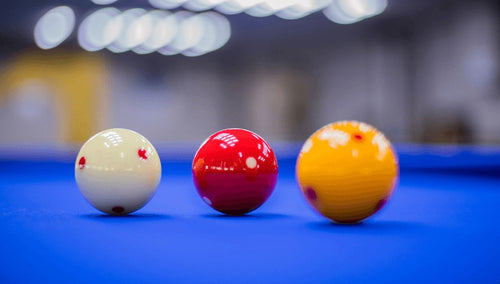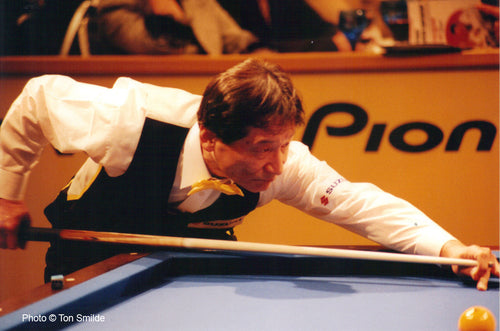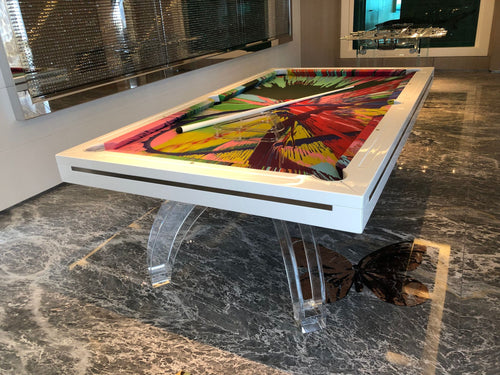Enjoy our modern designs
In the refined, competitive world of billiards, a few striking figures have transcended the boundaries of the sport, carving out legacies that defy expectations and redefine norms. Among these trailblazers, Masako Katsura stands out not just as a skilled player but as a pioneering woman who challenged and changed the male-dominated landscape of billiards.

The First Lady of Billiards
Masako Katsura 桂 マサ子, known as "Katsy" among billiards enthusiasts, was born on March 7, 1913, in Tokyo. Her early life took a dramatic turn when her father passed away when she was just 12 years old. Subsequently, she moved in with her elder sister and her husband, Tomio Kobashi, who owned a local billiards hall. It was here, in the bustling environment of clacking balls and strategic plays, that Katsura was first drawn to billiards, not by ambitions of competition but by the mechanical precision and strategic complexity of the game.

From a young age, Katsura was immersed in the world of billiards. By the age of 13, she was spending time in her brother-in-law’s billiard room, and by 14, she was working as a billiard attendant, soaking up the nuances of the game. Kobashi, a fine player himself, took notice of her keen observational skills and natural aptitude for the sport and began to mentor her in various carom billiards games. The family even bought a billiard table for their home after recognizing Katsura’s intense interest in the sport.

Katsura’s dedication to mastering billiards quickly paid off. By the age of 15, she had won the women’s championship straight rail tournament of Japan, and soon after, she turned professional. She began touring with her sister across Japan, China, and Formosa, showcasing her growing skills and competing against male players, often beating them. Her talent was undeniable, and it propelled her onto the national and eventually international stage.
A Trailblazer on the World Stage
Masako Katsura’s relationship with Vernon Greenleaf, an American serviceman she met during a billiards exhibition in Tokyo, catalyzed a significant shift in her career. The couple married in 1950, and by then, Katsura had already claimed runner-up titles in Japan's national three-cushion championship multiple times. Her remarkable skills were further demonstrated when she scored 10,000 points at straight rail in a single exhibition, showcasing her ability to consistently control the game.

The couple moved to the United States in late 1951, just in time for the 1952 World Three-Cushion Billiards Championship in San Francisco. Welker Cochran, the tournament host and an eight-time world champion, had extended a conditional invite to Katsura after hearing glowing reports about her prowess. A private exhibition confirmed her exceptional skills in straight rail, balkline, and three-cushion billiards. Cochran was impressed, remarking that she could "beat anybody," and officially invited her to compete.
Katsura's Historic 1952 World Championship Run
Masako Katsura made history at the 1952 World Three-Cushion Billiards Championship in San Francisco, becoming the first woman ever to compete for a world billiards title. This event marked a significant milestone, coming just a decade after Ruth McGinnis was the first woman invited to play in a men's professional billiard championship.

The tournament featured a star-studded lineup, including the defending champion, Willie Hoppe, renowned for his 51 world titles, and Katsura's own mentor, Kinrey Matsuyama. The championship was held in a round-robin format at Cochran’s 924 Club, with Katsura facing off against ten of the world's top players.
Katsura's performance quickly captivated both the audience and her competitors. On her first match day, she faced Irving Crane, narrowly losing 50 to 42. She showcased her resilience and skill throughout the tournament, defeating Herb Hardt and Joe Procita, and even pulling off a surprising victory against Ray Kilgore. Her match against Hoppe drew a crowd of over 500, with the audience clearly rooting for Katsura, though she eventually lost 50 to 31.

Despite these challenges, Katsura's ability to compete at such a high level against seasoned male players was groundbreaking. Life magazine captured the public’s fascination, noting that San Franciscans, many unfamiliar with billiards, crowded in to see her play, drawn by the novelty of a woman competitor.

By the tournament's end, Katsura finished in seventh place, an impressive feat given the caliber of the competition. Her performance not only challenged gender norms in the sport but also signaled a new era where women could compete equally with men. Welker Cochran himself noted, "Given another two or three years of American competition and she will be the world's champion.... Masako has opened a new field for women.
Exhibition Tours
After her historic appearance in the 1952 World Three-Cushion Billiards Championship, Masako Katsura's fame skyrocketed, leading to numerous exhibition tours across the United States. Welker Cochran, emerging from a seven-year retirement, partnered with Katsura for a series of exhibitions that captivated millions. They kicked off with a three-day engagement at the Garden City Parlor in San Jose in April 1952, followed by stops in major cities like Kansas City, Chicago, Detroit, and eventually reaching the West Coast.

Each event featured a 100-point straight-rail match and a 50-point three-cushion game under tournament conditions, with Katsura often performing trick shots to dazzle the audience. These exhibitions not only showcased her exceptional skills but also aimed to inspire women, with Katsura stating her hope that the tour would prove billiards wasn't just a man's game. Despite some venues experiencing lower attendance, Katsura's presence on the tour circuit was a significant draw, challenging gender norms in sports and entertainment.
Impact and Legacy
Masako Katsura was more than a billiards player; she was a cultural icon whose impact transcended the billiards halls. Described by Danny McGoorty as "the greatest thing that ever happened in billiards," Katsura broke barriers and set new standards for female athletes. Her ability to compete equally with the world's best male players not only made her a sensation but also shifted public perceptions about women in competitive sports.

Katsura's legacy continued to inspire long after she stepped away from the spotlight. Her tours and matches were pivotal in making the game more accessible and appealing to women, proving that skill knows no gender. She remained a figure of fascination and respect, her story echoing through the decades as a testament to her skill, determination, and impact on the world of billiards and beyond.

